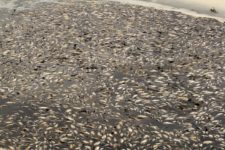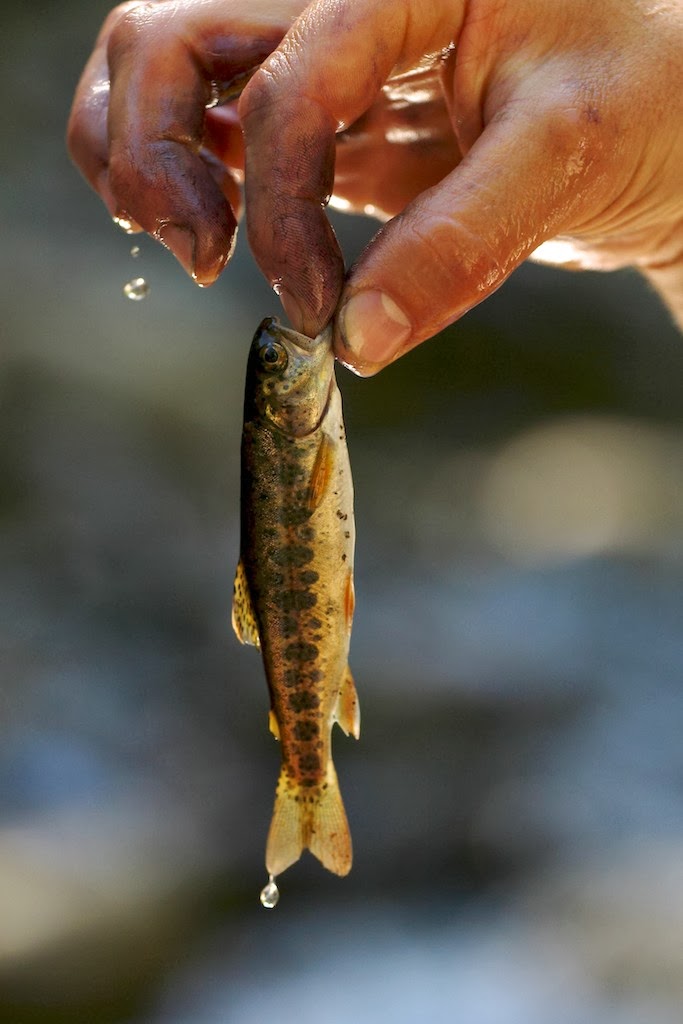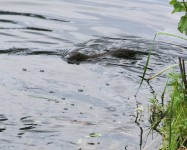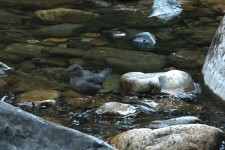Driving along the West Side Road in late March, the ponds at Ball Creek Preserve were all frozen except for a small opening. I did a double-take of what was floating in the water–first, I thought it was floating vegetation, then I realized it was dead fish! Hundreds of dead fish.
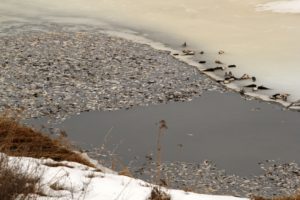
A few fish were up on the ice but most were still floating in the water. They hadn’t been exposed for long since only a few had been pecked at and opened up–most likely by the five bald eagles waiting on the ice at the other side of the pond.
What would cause so many fish to die?
When numerous fish die (called a fish kill) it is usually caused by extreme water temperatures, fish diseases, pollutants or the depletion of dissolved oxygen.
Winter fish kill (winterkill) is generally caused by the depletion of dissolved oxygen in shallow ponds with abundant plants and algae.
Normally, oxygen is produced by photosynthesis from submerged vegetation and algae and then fish use their gills to take in the oxygen.
In the winter when ice and heavy snow cover the pond, the amount of sunlight reaching the aquatic plants decreases and consequently the amount of oxygen produced by photosynthesis decreases. When aquatic plants can’t photosynthesize, they can’t produce the energy they need to survive and subsequently die. Likewise, when fish can’t obtain enough oxygen they begin to die.
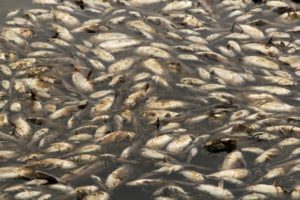
Once plants and fish die, they begin decomposing and float. The bacteria that feed on decomposing fish and plants also utilize the oxygen in the water, further depleting the oxygen supply.
In this case at Ball Creek Preserve, the shallow ponds were covered by deep snow (several feet!) in February which resulted in decreased amounts of sunlight penetrating though the ice–if any made it through at all. And it may have taken longer for the ice to melt than normal, further compounding the problem.
As oxygen levels decline, fish in poor condition and less tolerant fish begin to suffocate. Trout are highly sensitive to oxygen levels and begin to stress when dissolved oxygen drops to 5 mg/l. Moderately sensitive species are bluegill and largemouth bass. Fish with intermediate sensitivity (stress at 2 mg/l) are walleye, yellow perch, northern pike, carp and crappie species.
As far as I could tell, the majority of this winterkill was bullhead catfish which have a low sensitivity to dissolved oxygen. In the summer, catfish can withstand dissolved oxygen levels as low as 3 mg/l. In the winter, the lethal threshold decreases to a minuscule 0.2 to 0.3 mg/l. Since catfish can withstand really low levels of dissolved oxygen, there must of been very little oxygen–if any–left in the pond.
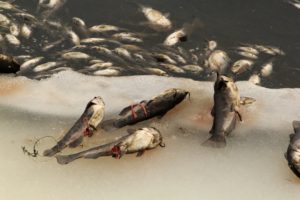
Winterkill isn’t noticed until the ice starts to melt, so it is hard to say at what point the water became depleted of oxygen and whether all the fish were killed. I didn’t realized so many fish lived in those ponds.
However, one benefit of winterkill is the feast created for animals such as eagles, osprey, raccoons and mink.

